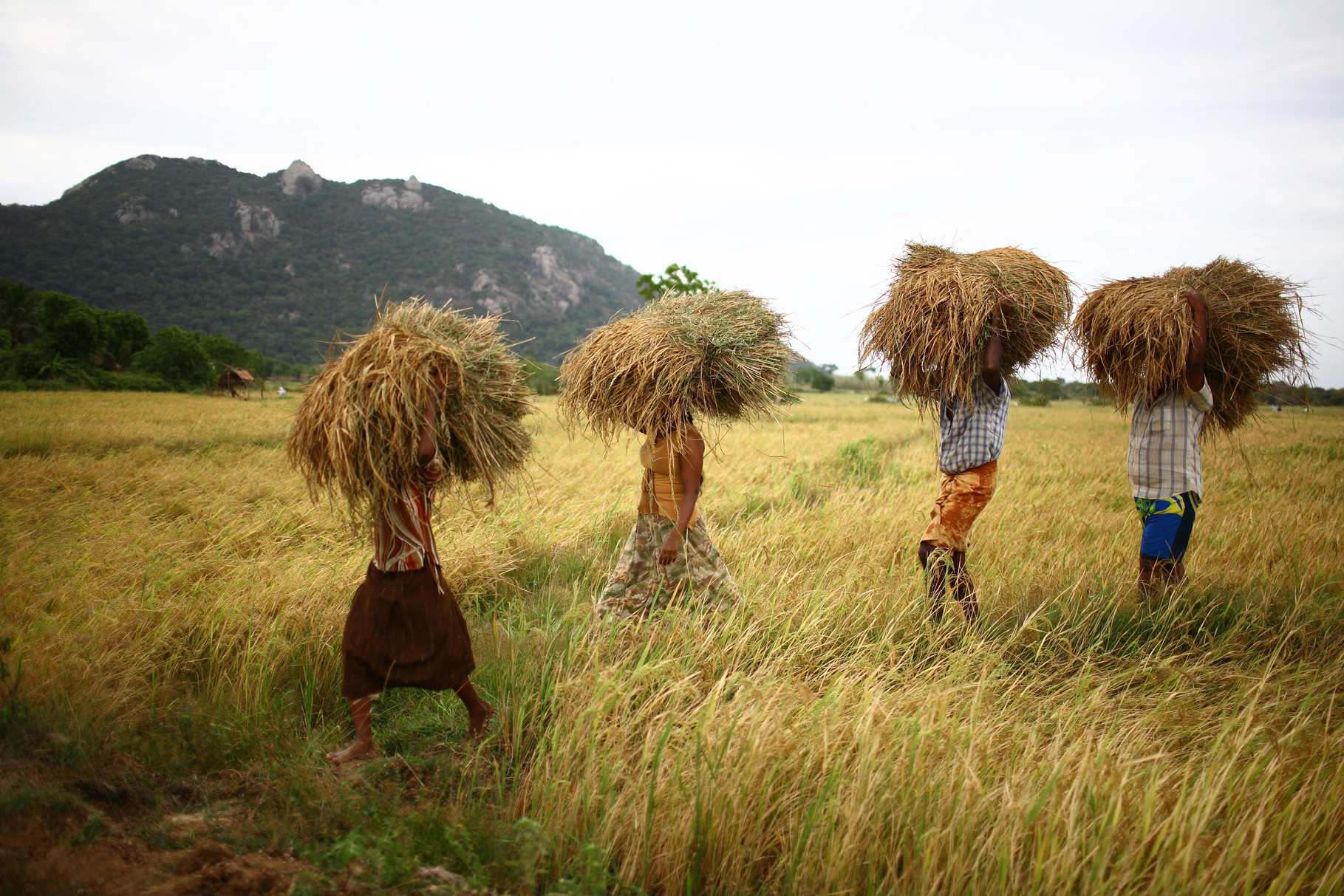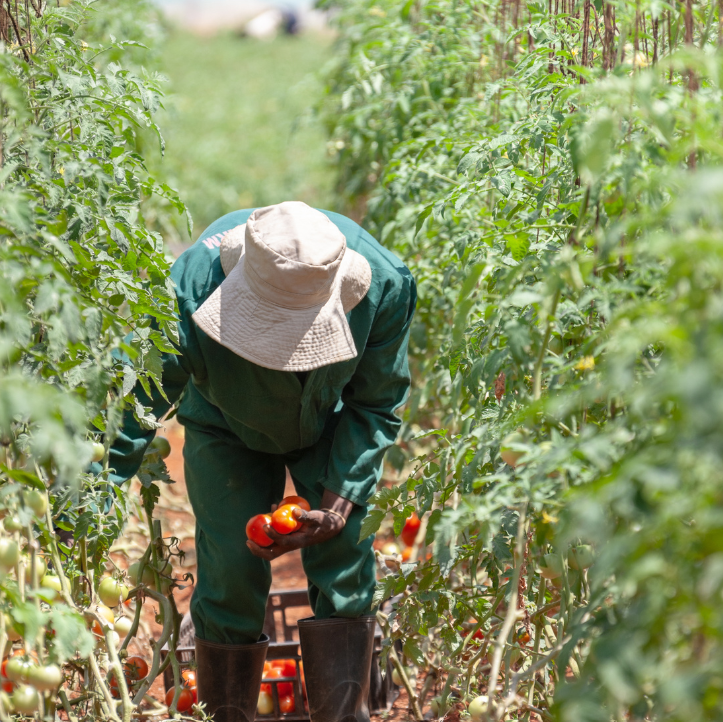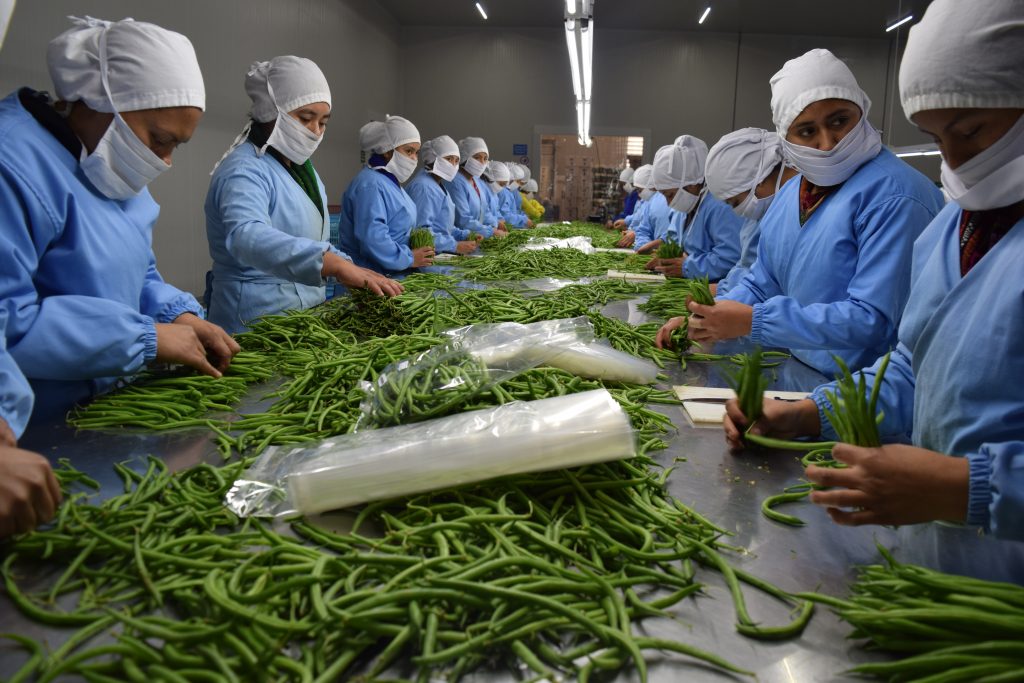
Photo Credits: IFAD/G.M.B. Akash
As the world watched in shock as Russia began its invasion of Ukraine, the images unfolding on the news felt for many like a world away. But now, just a few short months later, the knock-on effects of the war are hitting as close to home as the kitchen table. The two countries account for 30% of the world’s wheat and barley,18% of the corn, and about 80% of oil and oil meal. These figures underscore the cascading effects of human conflict that will have global implications, as UN Secretary-General António Guterres estimates it could push upwards of 1.7 billion people worldwide into poverty and hunger. Agriculture is a key economic engine in Ukraine, representing almost half of the commodity production sector that employs one-fifth of all Ukrainian workers. According to Ukraine’s Ministry of Agriculture, about one-third of the country’s farmland is currently occupied or unsafe. As prices for gasoline, fertilizer, seeds, and other agricultural inputs increase and as farmland is under fire, farmers cannot grow food in expected quantities and cannot get it to market (where markets still operate), causing food prices to rise for families, if food is even available.
Stagnating Supply Chains
Meanwhile, food that’s already been harvested languishes in port city siloes where ships are blocked by Russian forces or sea routes have been mined. The effects are far-reaching. On the other side of the world, Indonesia imports 28% of its wheat from Ukraine; Bangladesh imports 21%, and Egypt 80%. The price of grain worldwide is 25% higher, even in countries that don’t import from Ukraine.
Palladium’s Pablo Jimenez, a specialist in financial advice for farmers in Guatemala, says that the worst is still to come this fall. “Later this year, when the reserves of raw materials have been exhausted, those who have not made substantial changes in their way of producing will face serious impacts on crops and food consumption.” What the war has done, he explains, is increase the price of transport four-fold—from overseas shipping to trucking food from the countryside to the cities—and increased the price of petroleum-based fertilisers by 30%.
Taken together, the cost of agricultural inputs and the costs of transport are a near-perfect storm impacting both production and consumption sides of the equation. Another storm is brewing in the Horn of Africa where, according to the U.S. Agency for International Development (USAID), drought has created acute food insecurity, exacerbated by reliance on Russian and Ukrainian food imports and insurmountable price shocks for the largely poor population.
Financing Food Security
During the late June meeting of the G7 leaders in Germany, U.S. President Joe Biden pledged US$2.76 billion in additional resources to address the escalating food security crisis. According to a news release from USAID, “This pledge represents more than half of the over US$4.5 billion in additional resources that G7 leaders committed. Funds pledged today will bring the United States’ total investment in the global food security crisis to US$5.56 billion since the start of Russia’s further invasion of Ukraine.”
Biden also announced US$760 million in additional funding to combat rising costs fueled by the war. These funds will address global fertiliser shortages, purchase of resilient seeds, and safety nets for families suffering from hunger and malnutrition. Some US$120 million will be targeted to finance multilateral efforts to leverage donor investments that help vulnerable countries build their resilience to shocks, strengthen social safety nets, and mitigate supply chain issues to address near-term food security. And it’s not just the U.S taking action. The Department of Foreign Affairs and Trade in Australia along with the government of Indonesia support PRISMA, a market systems program implemented by Palladium that’s working to address fertiliser price hikes. Higher prices in fossil fuel fertilisers mean that other types—synthetic, mineral, and organic fertilisers—could help offset price hikes. These types are more immune to price increases and more affordable; but the drawback is that when used alone, they are not sufficient to increase crop productivity.
The Case for Supporting Farmers
According to David McMillan, Senior Manager of Palladium’s Natural Resources Hub, such input adjustments are an important opportunity for a work-around to keep farmers going despite the war. “We are working with some of the largest agricultural input companies to confirm that increased access to inputs is a key driver of farmer resilience and social outcomes, including food security.”
He envisions an industry-wide set of data and shared insights on how the performance of input companies leads to better agricultural outcomes. “Then we can accelerate the catalytic role these companies have on farmer livelihoods and food security.” Laura McCarty is Director of Communications for Palladium’s CATALYZE, a program to help investors explore commercially viable opportunities to create jobs, develop social services, rationalise supply chains, and advance inclusive growth. She says farmers—even those far from the war—are hit from several sides. “Higher gas prices make it difficult to get products to market. Supply chain disruptions can have devastating effects on producers.”
“If access to fertilisers and equipment is cut off, or the costs of inputs soar, or access to financing isn’t available, farmers won’t have the cash to purchase what they need to grow their produce,” McCarty adds.
The Food and Agriculture Organization of the United Nations (FAO) is assessing conditions and need in Ukraine, focusing now on the fall planting season that begins in September. The need is urgent, the FAO says, “as food access, production, and overall food availability deteriorate, efforts to bolster agricultural production and the functioning of food supply chains will be critical to averting a food crisis in 2022 and into 2023.” The FAO has put in place a rapid response plan to invest in food production in regions that are less affected by the war, hoping these locales can supply food to Ukraine and to people displaced by the war.
Of equal importance to feeding people in eastern Europe is to support farmers there with inputs and cash so that they can plant winter wheat and shorten the food crisis—bread for the world, so to speak.
This article was originally published on Palladium Group.

